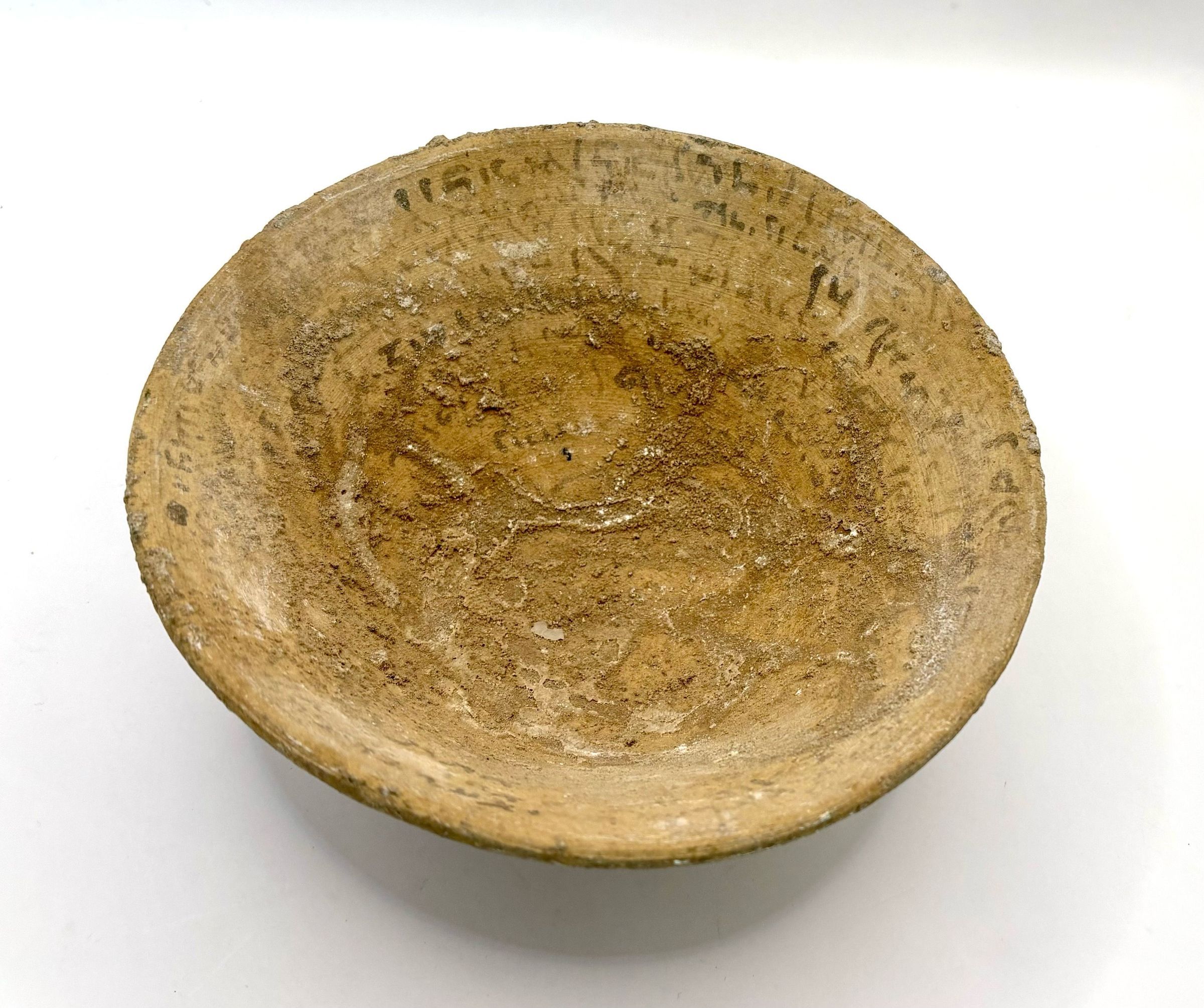Incantation or ‘Nippur’ Bowl
Name/Title
Incantation or ‘Nippur’ BowlEntry/Object ID
2025.L1.21Description
A Babylonian Jewish ARAMAIC Incantation Bowl from the Nippur regionCirca 700 AD. Eight lines of the Incantations can still be seen. Found in MesopotamiaContext
Aramaic incantation bowls, also called “magic bowls.” Bowls such as these probably stem from the late Sassanid period (sixth to seventh centuries) though both earlier (mid-fourth to fifth centuries) and later (eighth century) dates have been suggested. Most Aramaic incantation bowls come from the area around Nippur, in the heart of ancient Mesopotamia. Physically, they are common wheel-made earthenware bowls characteristic of the Late Antique Near East. The incantations are typically written in black ink spiraling from the inside to the outside, so that the bowl must be turned as it is read. The incantations are written in one of three dialects of Aramaic, a Semitic language closely related to Hebrew: Mandaic, Syriac (in two different scripts), and Jewish Babylonian Aramaic (with various sub-dialects). In general, the incantations are directed against evil spirits, various illnesses, and the curses of demons and humans, and they reflect Jewish, Christian, and Mandaean religious traditions and also preserve remnants of Iranian and Mesopotamian religions. Jesus was most likely speaking or at least understanding three languages: Greek, Aramaic, and Hebrew. But most of theologians will tell you that he spoke Aramaic because Hebrew was a dead language, only spoken in the synagogues or for really religious reasons.Category
Ancient Pottery & Artefacts

